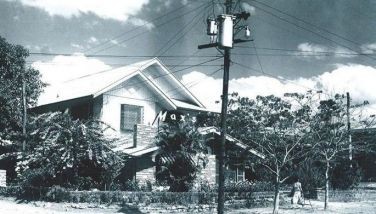History of the book

The title is “The Book-Makers” by Adam Smyth (Basic Books, 2024). It is a very interesting history of the physical printed book which is very timely during these contemporary times because the book is increasingly becoming online. This book does not write about authors who wrote books nor is it about well-known collectors of physical books. It is about printers, binders and paper makers whose hands and minds shape the physical objects we now cherish.
Smyth organizes his book into 11 thematic chapters, each of which focuses on a key aspect of book production. This includes printing, binding, paper making, typography and circulation. It personalizes the history and historical changes of physical books through the lives of 18 individuals who made books possible. It shows the transition from handwriting to book printing.
It was interesting to note that the early printed books tried very hard to look like handwritten texts. This was generally attributed to the fact that handwritten texts were the available models during those times. For example, Gutenberg’s Latin Bible of 1455, although printed, was designed to look like handwritten texts.
The first chapter is on Printing and the featured personality is Wynkyn de Worde who lived more than 500 years ago. However, some of his books still survive. De Worde’s books, which he printed, included medieval English romances and comic tales which were actually a reworking of Chaucer’s tales. These were actually the start of what would eventually be called bestsellers.
De Worde was a Dutchman who worked in London. He was considered a pivotal figure in the early efforts to standardize and distribute printed texts in the late 15th and early 16th centuries.
The early books were primarily cut and paste. It was John Baskerville and Sarah Eaves that really popularized the process known as typography. Eaves played a critical role in refining type design which changed the nature of bookmaking. One story is that the expertise required to produce the early punches, the product of typography, were closely guarded secrets.
Another chapter is the one on Benjamin Franklin, who became an American printer of national significance. At the age of 23, he became America’s publisher of its most important newspaper, The Pennsylvania Gazette. It was during his lifetime when printing as a trade spread rapidly in the New World.
The status of the printer-publisher rose from menial workers to national figures. The printed copies of books and newspapers became more accessible and much less expensive. This period was also the start of the introduction of paper money.
Another kind of publication that made people like Benjamin Franklin so well-known was the introduction of almanacs. The early almanacs were cheap, small, eminently portable books which provided readers with monthly calendars; astrological and meteorological prognostications; medical advice and discussions on the influence of the planets on the parts of the body. They were the most popular kind of printed books in 17th century England. For example, in 1666, 43,000 copies of Vincent Wings’ almanac were printed. In the Americas, Franklin’s Poor Richard’s Almanac was printed in 1733.
The person who revolutionized the paper industry was Nicolas Robert, who remains relatively unknown. He invented the technology that produced the modern version of the paper. The original form of paper actually started in China.
The sad story of Robert is that he was never given credit nor did he profit from his invention.
“The Book-Makers’ is not written like an academic publication. It is filled with historical anecdotes and details that bring historical moments to life. For example, when describing the physicality of early bookmaking, Smyth writes: “Books are themselves incredible objects whose beauty and complexity enrich the text being read.” Smyth also stresses the emotional connection between the bookmakers and their creations: “Books are expressive objects which themselves possess an emotional range and which convey in their material forms, in ways that are sometimes legible, the texture of what it meant for a particular bookmaker to be alive.”
In this sentence, Smyth seeks to remind readers that books are more than just vessels for words but they are crafted objects imbued with the personalities and experiences of their makers.
This is a time when digital technology is threatening to overshadow traditional book production. However, Smyth says: “One of the reasons why books will endure is that they do not merely or straightforwardly convey text to readers. They are not only messengers, although they are that too. Books are themselves incredible objects whose beauty and complexity enriches the text being read.”
In his book, Smyth stresses that the physical book was made by people and not by algorithms or by digital technology.
This book is not just a chronicle of technical advancement but a narration and a celebration of individuals whose dedication to their craft made the physical books as we know them today possible. The book that you see everywhere is the product of designers, editors, artists.
Today, the question is still asked: Will the book endure? Or, is the book dead? Smyth writes: “… these questions are mistaken because the five and a half centuries since Gutenberg (the inventor of the printing press) show the book to be a form that has continually adapted to new people, ideas, context and technologies while all the time maintaining its identity as a physical support for text.”
* * *
Email: elfrencruz@gmail.com
- Latest
- Trending























